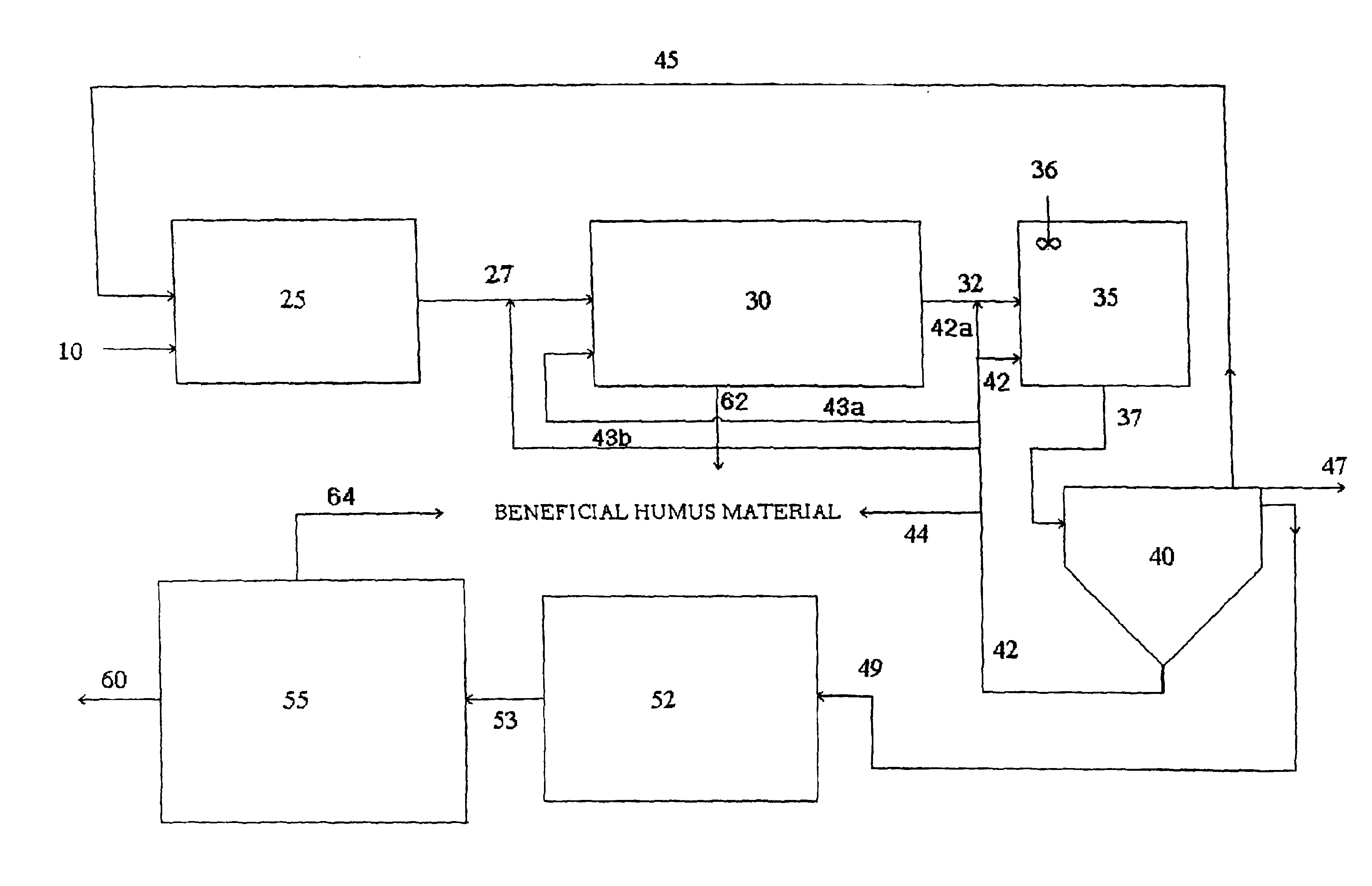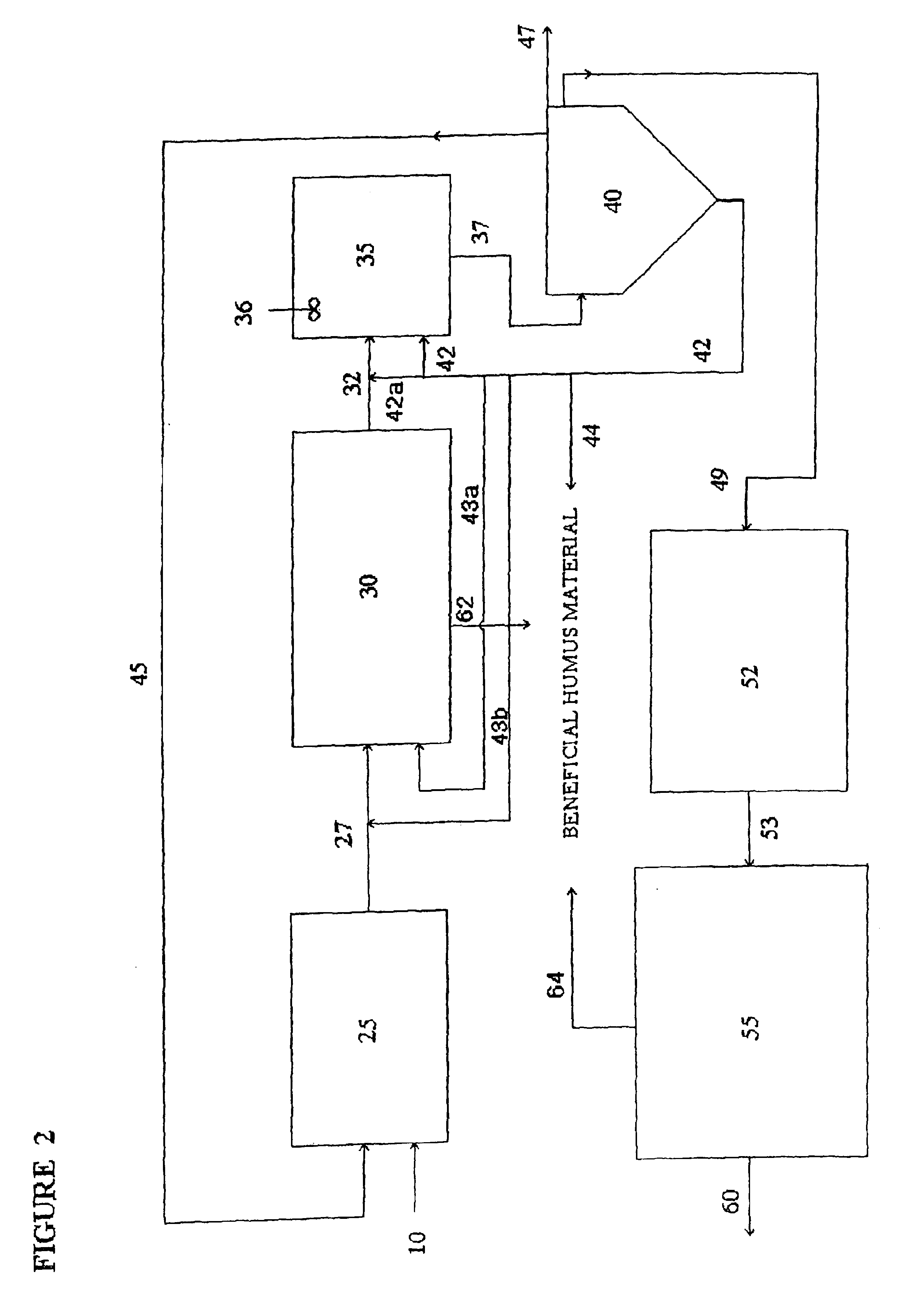Low oxygen organic waste bioconversion system
a bioconversion system and organic waste technology, applied in the direction of biological water/sewage treatment, water treatment parameter control, products, etc., can solve the problems of generating and exacerbate the offensive odor, negatively affecting air and soil quality, polluting surface and subsurface water supplies, etc., to achieve safe storage and maintain the effect of pleasant odor
- Summary
- Abstract
- Description
- Claims
- Application Information
AI Technical Summary
Benefits of technology
Problems solved by technology
Method used
Image
Examples
Embodiment Construction
[0039]In the low oxygen bioconversion process of the present invention, evolution of a natural microbial community is encouraged under low dissolved oxygen conditions leading to a plurality of desirable ecological niches. Further, when the flowable organic waste stream to the bioconversion process of the present invention contains relatively high concentrations of total BOD and TKN, and the TKN to total BOD by weight ratio is relatively high, e.g. when the mass ratio of TKN:total BOD is more than about 1:20 by weight, and preferably more than about 3:20, the resulting low oxygen bioconversion process can be an effective processing approach for rapid, substantially odorless, bioconversion of the waste stream substrates.
[0040]When the influent oxygen loading and the dissolved oxygen concentration in a biological treatment process are suitably regulated to maintain a dissolved oxygen concentration of less than about 2.0 mg / l, preferably less than about 0.1 mg / l in the aqueous portion o...
PUM
| Property | Measurement | Unit |
|---|---|---|
| doubling time | aaaaa | aaaaa |
| distance | aaaaa | aaaaa |
| concentration | aaaaa | aaaaa |
Abstract
Description
Claims
Application Information
 Login to View More
Login to View More - R&D
- Intellectual Property
- Life Sciences
- Materials
- Tech Scout
- Unparalleled Data Quality
- Higher Quality Content
- 60% Fewer Hallucinations
Browse by: Latest US Patents, China's latest patents, Technical Efficacy Thesaurus, Application Domain, Technology Topic, Popular Technical Reports.
© 2025 PatSnap. All rights reserved.Legal|Privacy policy|Modern Slavery Act Transparency Statement|Sitemap|About US| Contact US: help@patsnap.com



